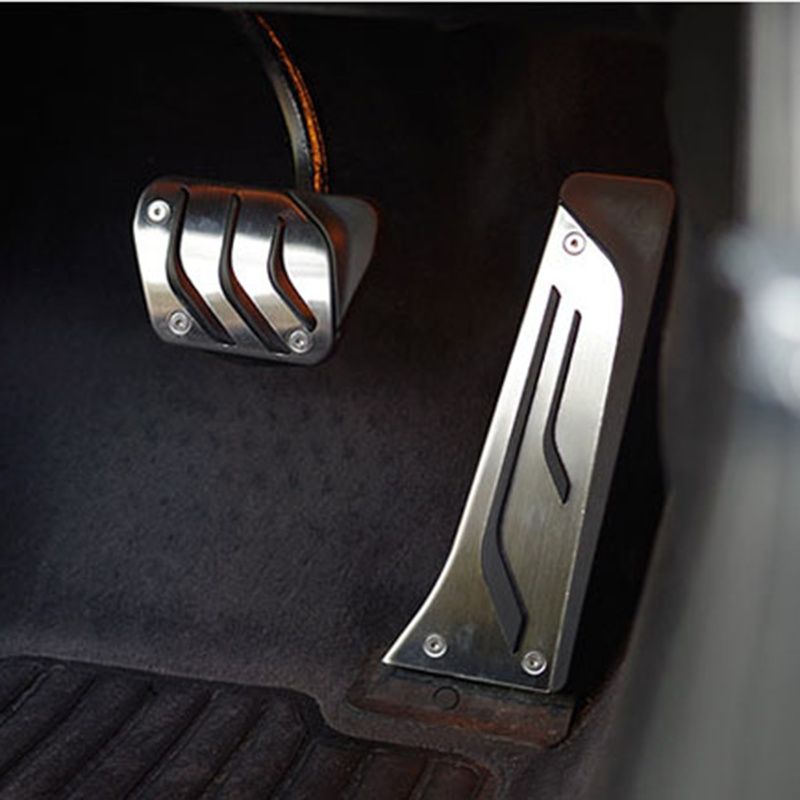
Brake pedal is one of the most important components of your vehicle, ensuring your safety on the road. Any issues with this critical component can compromise your ability to stop effectively, leading to hazardous situations.
Recognizing the signs of a bad brake pedal is important for maintaining road safety and preventing potential accidents. If you ignore these signs, it could ultimately lead to brake failure, putting you, your passengers, and other users on the road at serious risk.
Regularly checking and promptly addressing any brake pedal issues not only ensures your vehicle’s braking system functions properly, but also gives you peace of mind, knowing that you can stop safely and effectively.
What Are The Signs Of A Faulty Brake Pedal

1. Soft Or Spongy Pedal Feel
One of the most common signs of a faulty brake pedal is a spongy or soft feel when you press down on it. A soft or spongy pedal often indicates air or moisture in the brake lines, leading to decreased hydraulic pressure. If you notice the pedal feels mushy or sinks to the floor slowly when you apply pressure, it is a clear sign of trouble. This issue requires immediate attention from a qualified mechanic to bleed the brake lines and restore proper hydraulic pressure.
2. Low Brake Pedal Height
A brake pedal that sits lower than usual or closer to the floor than normal could signal a problem with the brake system. The brake booster assists in applying pressure to the brake system, and a malfunction can result in a lower-than-normal pedal height. A lower pedal height means you need to apply more force to stop the vehicle effectively, which can lead to delayed braking and increased risk of accident. This issue requires a professional diagnosis and repair to ensure your brakes operate correctly.
3. Pedal Stiffness
A brake pedal that feels stuck or requires excessive force to depress is a clear indication of a problem within the braking system. It could signal a problem with the brake booster, brake lines, or even a malfunctioning master cylinder. A stiff brake pedal makes it difficult to apply enough pressure to stop the vehicle quickly, compromising safety. If you notice increased resistance when pressing the brake pedal, have your brakes inspected promptly to avoid potential accidents.

4. Pedal Vibration Or Pulsation
If you experience vibrating or pulsating sensation through the brake pedal when applying pressure, it could indicate warped brake rotors or drums. Warped rotors result from excessive heat building during braking, causing them to develop uneven surfaces. Uneven brake pad wear can also lead to vibrations. Ignoring these vibrations can lead to more significant problem overtime. Have your brakes inspected and serviced if you notice any unusual vibrations while braking.
5. Brake Pedal Noise
Unusual noises emanating from the brake pedal, such as squealing, grinding, or clicking sounds, are warning signs of potential brake problems. Squealing usually means worn brake pads, while grinding suggests severely worn pads or damaged rotors. Clicking or tapping sounds can indicate loosed or damaged brake components. Any unusual noise coming from the brake pedal should prompt immediate inspection and repair to avoid brake failure.
Conclusion
Recognizing the signs of a bad brake pedal is important for ensuring your safety and the safety of others on the road. If you experience any of the aforementioned symptoms, its vitally important to have your vehicle inspected by a qualified mechanic for proper diagnosis and repair to maintain your vehicles safety on the road. Remember, your safety and the safety of others depends on the reliability of your vehicle’s braking system and ensures peace of mind behind the wheel.
